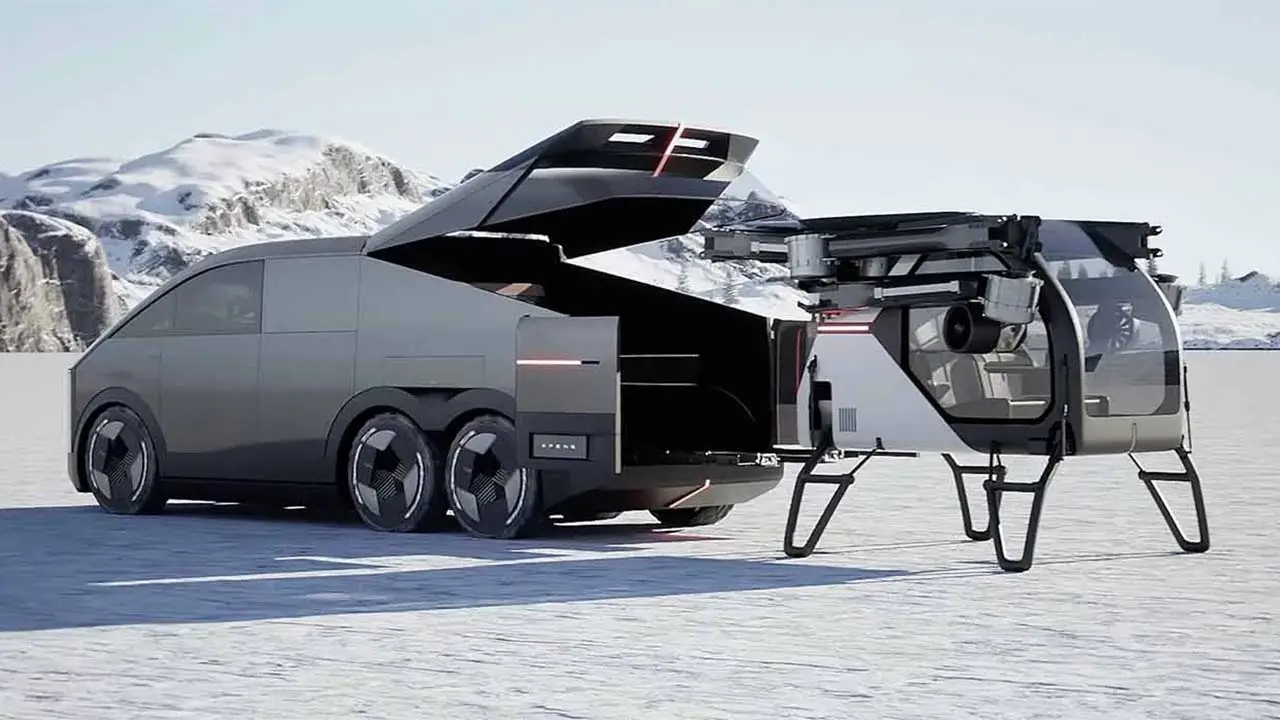The dream of flying cars has been ingrained in our collective imagination for nearly a century, fueling visions of a futuristic world. With various companies striving to turn this dream into reality, recent developments have brought us closer than ever. Notably, Xpeng, a leading Chinese electric vehicle manufacturer, is set to revolutionize the concept of flying cars with the introduction of its modular flying car – the Xpeng Aeroht.
Xpeng’s Entry into the Flying Car Industry
In the race to create the first commercially viable flying car, Xpeng has emerged as a significant player. The company aims to commence mass production of its flying cars by the fourth quarter of 2025. What sets Xpeng apart is its commitment to making these flying cars accessible sooner than later. Pre-orders for the modular flying car, Xpeng Aeroht, are set to open in the fourth quarter of 2024, with deliveries expected in the subsequent quarter.
Understanding Modular Flying Cars
The concept of a modular flying car may raise eyebrows and evoke curiosity. However, this innovative design is more than just a catchy term. It addresses critical challenges associated with flying car technology, steering clear of the fantastical portrayals found in science fiction. Unlike magical motor technology lifting hefty cars off the ground, Xpeng’s modular flying car relies on propellers, akin to those used in drones.
The Working Principle
In today’s flying cars, the reliance on propellers allows for a more feasible approach. Xpeng’s design ingeniously combines the functionalities of a traditional car and a giant flying drone. A concept video showcases the seamless deployment of a drone from the car’s trunk, providing users with an experience that aligns with their dream of a “flying car.”
Xpeng Aeroht in Action
The modular flying car consists of an electric piloted aircraft with vertical takeoff capabilities and low-altitude flight. Its electric propulsion system adheres to stringent safety standards, mitigating the risk of single-point failures. The aircraft boasts both manual and automatic driving modes, ensuring a versatile and user-friendly flying experience. Moreover, its 270° panoramic two-person cockpit guarantees a wide field of view for enhanced safety and enjoyment.
Safety Considerations
Safety is a paramount concern in the development of flying cars. Xpeng Aeroht prioritizes safety by complying with established standards. The availability of both manual and automatic driving modes adds an extra layer of security, allowing users to choose their preferred mode based on their comfort and skill level. The panoramic cockpit design ensures a comprehensive view, reducing blind spots and enhancing overall safety.
Limitations and Regulations
Despite the excitement surrounding the Xpeng Aeroht, there are still uncertainties regarding its usage and permissions. While the potential for thousands of people commuting in flying cars is exhilarating, practical considerations must be taken into account. The article delves into the speculation of traffic management for flying cars and anticipates the introduction of special licensing requirements for users within city limits.
Potential Impact on Daily Life
The article paints a vivid picture of a future where flying cars become a part of everyday life. It explores the potential challenges and benefits of widespread flying car usage, addressing concerns about the increased likelihood of “traffic accidents.” The reader is encouraged to imagine a scenario where the sky is filled with flying vehicles, transforming the way we commute to work and school.
Future Possibilities
As Xpeng Aeroht prepares for launch, certain aspects remain uncertain, such as the duration of flight and the vehicle’s primary purpose. While the current emphasis is on exploration and observation, the article speculates on the evolving role of flying cars in the near future. The concluding section maintains an optimistic view, suggesting that we might soon witness a world where flying cars become a ubiquitous mode of transportation.
Conclusion
In conclusion, the dream of flying cars is on the verge of becoming a reality, thanks to Xpeng’s innovative approach with the Aeroht. The modular flying car combines cutting-edge technology with practical design, addressing challenges and paving the way for mass production. While uncertainties and regulatory questions persist, the prospect of everyday flying cars seems closer than ever. The article concludes by urging readers to embrace the excitement and anticipate a future where the skies are filled with modular flying cars.
FAQs
- Can anyone pre-order the Xpeng Aeroht?
- Pre-orders for the Xpeng Aeroht are expected to be open to the general public in the fourth quarter of 2024.
- What safety measures does Xpeng Aeroht incorporate for flying?
- Xpeng Aeroht adheres to safety standards, with an electric propulsion system designed to prevent single-point failures. It also offers both manual and automatic driving modes for a secure flying experience.
- Are there restrictions on using the Xpeng Aeroht within city limits?
- It is anticipated that usage without a special license may be prohibited within city limits to address potential traffic concerns.
- What is the expected flight duration of the Xpeng Aeroht?
- The article acknowledges uncertainty regarding the flight duration, suggesting that the vehicle might serve more as an exploration and observation vehicle than a primary means of transportation.
- When is the mass production of Xpeng Aeroht flying cars set to begin?
- Xpeng aims to commence mass production of its flying cars by the fourth quarter of 2025.


